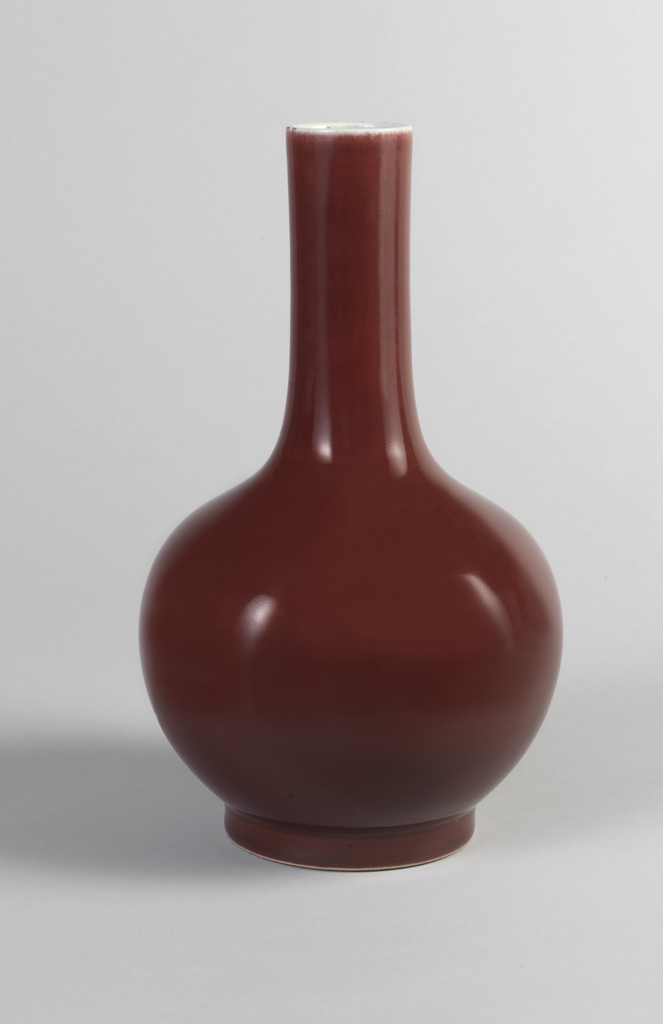The deep red glaze on this porcelain vase is derived from copper, a metal which is notoriously difficult to control under the heat of a kiln. The distinct oxblood color is created when copper is starved of its oxygen during the firing (in a smoky, oxygen reduced kiln) and re-oxidized in the cooling. The resulting glaze, which can vary in color and opacity, is among the most distinctive and elusive of all high fire ceramics.
Made during the Chi’en Lung period (1736-95) of the Qing Dynasty (1644-1911), this vase embodies the continuation of centuries of Chinese ceramic traditions. The noble simplicity of the form, with its slender neck and short foot, refers to shapes established by potters of the Tang dynasty (618-906). Monochrome porcelain with beautifully controlled thick glazes was a specialty of the Song dynasty (960-1279). Chinese red glazes were developed over several hundred years; some of the most celebrated examples date to the early fifteenth century, when potters of the Ming dynasty (1368–1644) produced wares for use in imperial rites. The technique was lost in the sixteenth century but was revived approximately two hundred years later, in the early eighteenth century, when Jingdezhen potters were commissioned by the court in Beijing to develop replications of classical glazes. These Qing glazes, the results of an organized program of systematic testing, were extraordinarily glossy and far more fluid than their predecessors.
Oxblood, or Sang-de-boeuf, ceramics have been greatly admired by Western collectors. Many American and European potters of the eighteenth and nineteenth centuries pursued the challenge of recreating the coveted glaze in their own studios and factories.
Rebekah Pollock is a decorative arts historian specializing in European ceramics and eighteenth-century print culture.

2 thoughts on “Elusive Oxblood”
Sal Trabanino on April 24, 2015 at 3:41 pm
The ox-blood glaze always has a cracquelure. This one does no have it, so it should be called just a “copper red” vase. The Chinese name for ox-blood or Sang de boeuf glaze is Langyao.
George Taylor on November 3, 2016 at 7:04 pm
Correct. All antique oxblood ware made by reducing copper oxide in the glaze to copper metal has a fine crackle, often not obvious. It also runs on vertical areas like the top of vase necks leaving a white or bluish streaked area. It is unusual to find a genuine antique oxblood object that did not also run off the bottom. This piece also lacks the glassy shine of a true glaze. I strongly suspect that this is actually an enamel ware vase. Enamels are low fired and do not run but lack the deep shiny red of a copper red glaze. Close examination of an enamel ware piece will show a slightly pebbled surface often looking like orange peel.